The frequency of #SardineSydney stories in the mainstream media has escalated as the city’s population has swelled way above the capacity of the road, public transport and housing systems.
This angst last year led to a revolt by both residents and NSW politicians alike, who want the federal government to slash Australia’s immigration intake in order to take the pressure off Sydney’s crush-loaded housing and infrastructure.
In October, the head of the Greater Sydney Commission (GSC), Lucy Turnbull, responded to this pressure by outlining a plan to split Sydney into three activity centres, which the GSC claimed would help relieve stress on both housing and infrastructure.
In reality, the GSC’s plan involves crush-loading Sydney’s West. As shown in the below graphics, the overwhelming majority of Sydney’s 750,000-strong population growth over the past decade has taken place in the city’s West:
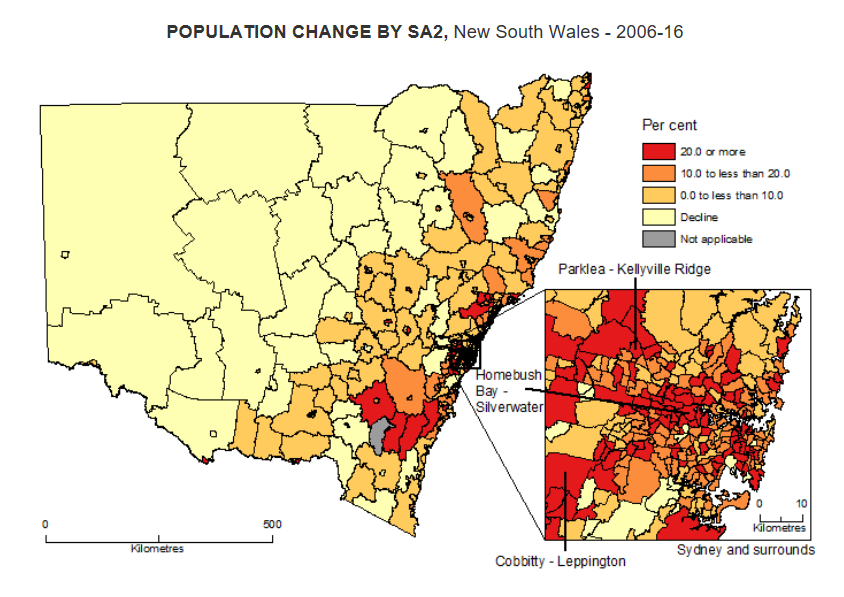
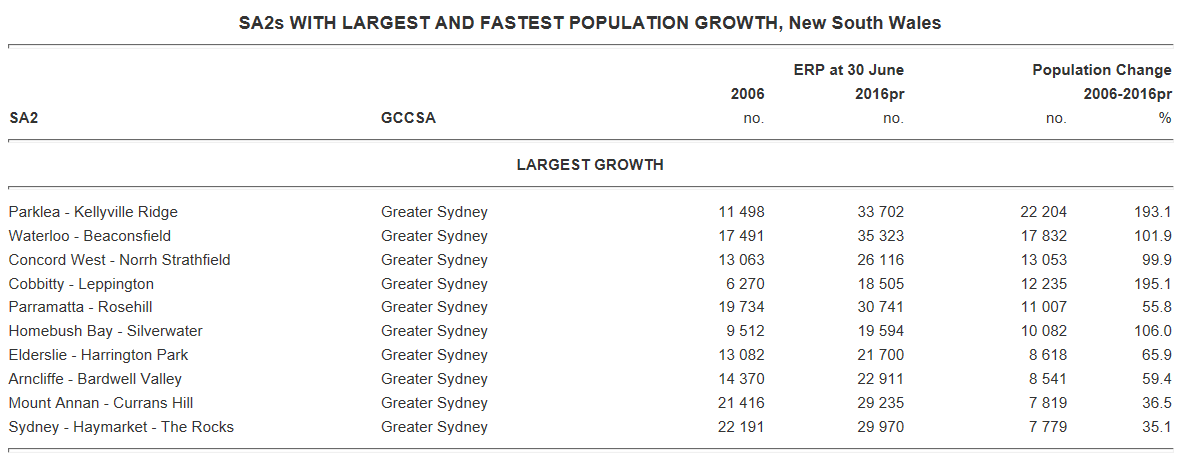
Moreover, of the 1.74 million forecasted increase in Sydney’s population over the next 20 years (1.53 million from net overseas migration), the lion’s share of the growth is projected to take place not in Lucy Turnbull’s wealthy East, but in the long struggling West (see below charts).
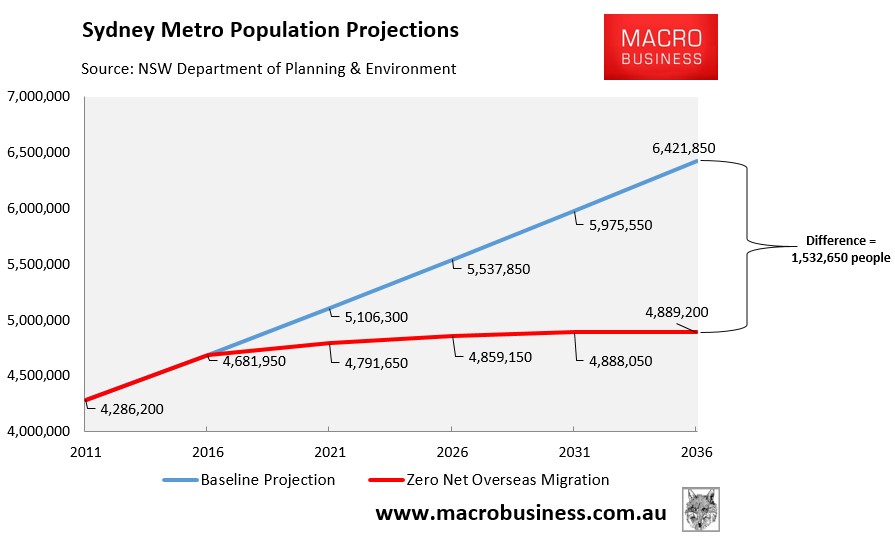
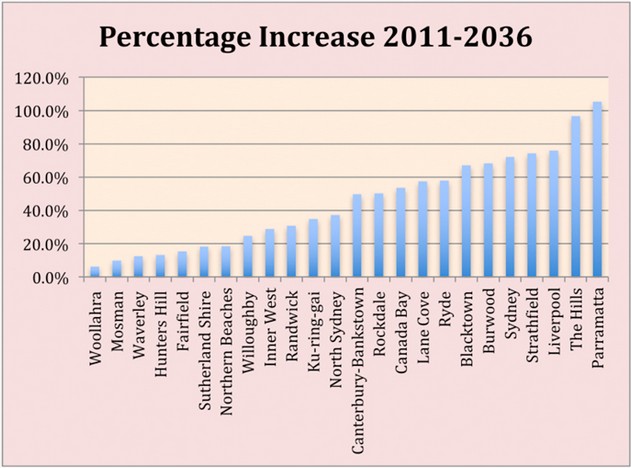
Still, this hasn’t stopped Lucy Turnbull’s own wealthy constituents from raising a stink about Sydney’s population growth, with residents in Sydney’s eastern suburbs plagued with concerns about congestion and overdevelopment. From The SMH:
“Rose Bay is full when you consider the traffic and congestion issues, local state primary and secondary schools are full, there is a shortage of preschools, parks are fully utilised,” [resident Bruce Bland] said.
Mr Bland, the vice-president of the Rose Bay Residents Association, said a proposal from Woollahra Municipal Council to transform two car parks into a community centre, apartment and retail complex with additional parking spaces will exacerbate the suburb’s congestion and infrastructure woes…
“This will further exacerbate existing traffic and congestion problems,” he said. “It could also come with a much-needed community centre [we don’t have one], but again, jamming more people and activities into an already overcrowded area…
Mr Bland said pollution at Rose Bay Beach was another symptom of the inadequacy of infrastructure to cope with the increasing population…
Rose Bay had an estimated 6415 residents in 2016, with a population density of 31.33 persons per hectare, according to the 2016 census. Neighbouring Bellevue Hill had an estimated 11,538 residents and a population density of 48.64, while Vaucluse-Watsons Bay had 7828 residents and a population density of 23.79…
Rose Bay is less crowded than Balmain, which had 11,396 residents, and a population density of 73.69 persons per hectare, according to the 2016 census.
In comparison, Pyrmont has 13,812 residents, and a population density of 148.40, while Potts Point had 7083 residents, and a population density of 141.16.
As shown in the chart above, the Woollahra local government area – which encompases Rose Bay – is projected by the GSC to receive the lowest population growth in the 25 years to 2036 (circa 5%). So spare a thought for the suffering residents of Parramatta and The Hills, whose populations are projected to roughly double.
Of course, there is an easy solution to easing the crush in Sydney: demand the federal government abandon its mass immigration ‘Big Australia’ policy:
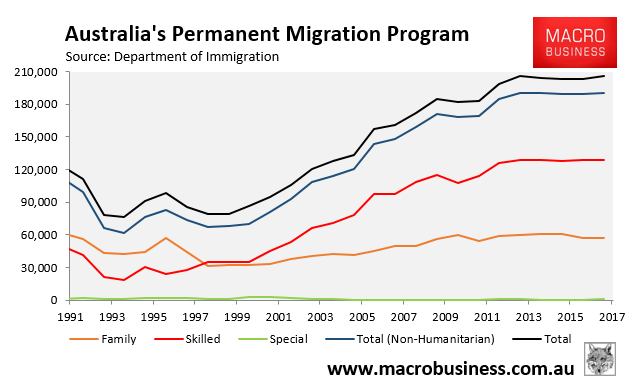
As noted in MB’s submission to the Department of Home Affairs’ Managing Australia’s Migrant Intake review:
It took Sydney around 210 years to reach a population of 3.9 million in 2001. And yet the official projections have Sydney adding roughly the same number of people again in just 50 years.
Few Sydneysiders want a city of 8 million people mid-century. The one they have currently is barely functioning properly at 4.7 million.
Residents of Sydney need to fight back against elites like Lucy and Malcolm Turnbull, who are intent on crushing ordinary workers’ wages growth, driving-up housing costs and congestion, and lowering Sydney’s overall livability.

